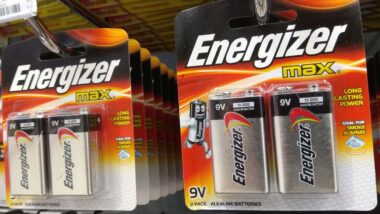Top Class Actions’s website and social media posts use affiliate links. If you make a purchase using such links, we may receive a commission, but it will not result in any additional charges to you. Please review our Affiliate Link Disclosure for more information.

Gadolinium contrast agents are often used during magnetic resonance imaging (MRI) scans to enhance the information doctors can glean from these images.
Gadolinium is a heavy metal, and its magnetic qualities can enhance the imaging of organs, blood vessels, and tissues when injected intravenously. Enhanced imaging enabled by gadolinium contrast agents helps doctors diagnose cancer, infections, bleedings, and other conditions. But use of these contrast agents can lead to gadolinium retention.
Although gadolinium agents provide countless benefits to MRI imaging, they may not be completely safe for all patients. Recent reports suggest that these contrast agents may lead to gadolinium retention, where the heavy metal stays in the body for months or years after the initial injection.
When patients suffer from gadolinium retention, their symptoms can vary. However, patients may often report symptoms such as pain and burning sensation in the arms, legs, and torso, cognitive difficulties or “brain fog”, headaches, memory impairment, bone and joint pain, spongy or rubbery skin, thickened and painful ligaments, tightness in the hands and feet, and more.
Some patients may be at a higher risk for gadolinium retention. In December 2017, the U.S. Food and Drug Administration (FDA) released a safety alert informing the public that gadolinium retention may lead to nephrogenic systemic fibrosis (NSF) in patients who already experience kidney issues. However, gadolinium retention complications may not be limited to patients with preexisting conditions. Even in patients with normal kidney function, the FDA has received reports of multi-organ system complications.
After receiving reports of gadolinium retention, the FDA has required new warnings and unsafe restrictions for gadolinium contrast agents. One new change is a patient guide to be distributed to patients before being injected with contrast agents, providing more information about the agents and gadolinium retention. Additionally, manufacturers of gadolinium contrast agents are being required to conduct further studies into gadolinium retention and other contrast agent risks.
“Health care professionals should consider the retention characteristics of each agent when choosing a GBCA for patients who may be at higher risk for gadolinium retention,” the FDA gadolinium retention alert says. “These patients include those requiring multiple lifetime doses, pregnant women, children, and patients with inflammatory conditions.”
“Minimize repeated GBCA imaging studies when possible, particularly closely spaced MRI studies. However, do not avoid or defer necessary GBCA MRI scans.”
Although gadolinium retention may seem like a rare issue, it is more common than one may think and has even plagued celebrities in recent years. In November 2017, popular actor Chuck Norris announced that he and his wife, Gena Norris, were filing a lawsuit against several manufacturers of gadolinium contrast agents.
The couple said their legal action was prompted by Gena’s development of gadolinium retention symptoms five years after she was administered a contrast agent during an MRI. Gena reportedly experienced a variety of symptoms due to gadolinium retention including cognitive impairment, burning body pain, kidney damage, loss of mobility, low energy, and difficulty breathing.
Gena claims that manufacturing companies have left plaintiffs such as herself with no choice but to take legal action.
“These companies continue to say that there is no link between gadolinium and adverse events, even though the evidence is overwhelming that this heavy metal stays in the body for years, rather than hours,” Gena said in a statement.
Join a Free Gadolinium Toxicity Class Action Lawsuit Investigation
If you or a loved one developed gadolinium toxicity after having an MRI with gadolinium contrast, you may be eligible to file a gadolinium MRI lawsuit against pharmaceutical companies. Fill out the form on this page for a FREE evaluation of your eligibility.
ATTORNEY ADVERTISING
Top Class Actions is a Proud Member of the American Bar Association
LEGAL INFORMATION IS NOT LEGAL ADVICE
Top Class Actions Legal Statement
©2008 – 2024 Top Class Actions® LLC
Various Trademarks held by their respective owners
This website is not intended for viewing or usage by European Union citizens.
Get Help – It’s Free
Join a Free Gadolinium MRI Lawsuit Investigation
If you qualify, an attorney will contact you to discuss the details of your potential case at no charge to you.
PLEASE NOTE: If you want to participate in this investigation, it is imperative that you reply to the law firm if they call or email you. Failing to do so may result in you not getting signed up as a client or getting you dropped as a client.
E-mail any problems with this form to:
Questions@TopClassActions.com.
Oops! We could not locate your form.












